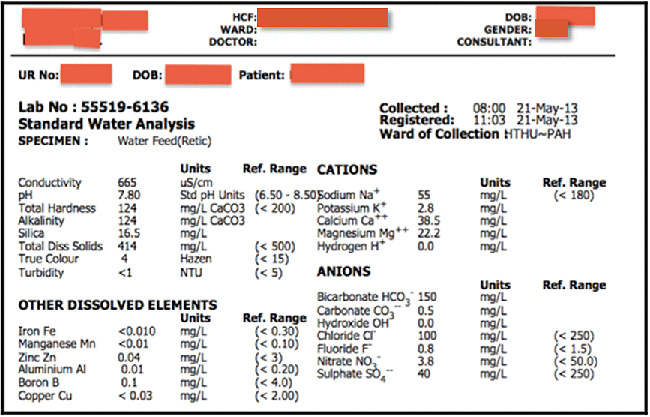The make-up of water will vary, over time, with any municipal water system. To ensure good consistent brewing water that will produce a better product and a consistent product, knowing what is in your water is essential. Today, knowing that you can control the water make-up, right before brewing, allows you to control the taste and look of your brews.
For brewing, removal of unwanted chemicals through filtration, is step one. Control of Total Dissolved Solids (TDS) levels is step two. The last step is the safety process of running your water through a UltraViolet (UV) light to remove the possibility of water contamination. All of this is possible with today’s technology.
The following are definitions and terms that all municipal water reports use. You can review your municipal water report by going to the web, searching “Water Report 11111” using your Zip code in place of the example “11111”.

Definitions
In the water report table, you may find unfamiliar terms and abbreviations. To help you better understand these terms we’ve provided the following definitions:
Maximum Contaminant Level or MCL: The highest level of a contaminant that is allowed in drinking water. MCLs are set as close to the MCLGs as feasible using the best available treatment technology.
Maximum Contaminant Level Goal or MCLG: The level of a contaminant in drinking water below which there is no known or expected risk to health. MCLGs allow for a margin of safety.
Action Level (AL): The concentration of a contaminant that, if exceeded, triggers treatment or other requirements that a water system must follow.
Initial Distribution System Evaluation (IDSE): An important part of the Stage 2 Disinfection Byproducts Rule (DBPR). The IDSE is a one-time study conducted by water systems to identify distribution system locations with high concentrations of trihalomethanes (THMs) and haloacetic acids (HAAs). Water systems will use results from the IDSE, in conjunction with their Stage 1 DBPR compliance monitoring data, to select compliance monitoring locations for the Stage 2 DBPR.
Treatment Technique (TT): A required process intended to reduce the level of a contaminant in drinking water.
Maximum Residual Disinfectant Level or MRDL: The highest level of a disinfectant allowed in drinking water. There is convincing evidence that addition of a disinfectant is necessary for control of microbial contaminants.
Maximum Residual Disinfectant Level Goal or MRDLG: The level of a drinking water disinfectant below which there is no known or expected risk to health. MRDLGs do not reflect the benefits of the use of disinfectants to control microbial contaminants.
NA: Not applicable.
ND (Not Detected): Indicates that the substance was not found by laboratory analysis.
Parts Per Million (ppm) or Milligrams Per Liter (mg/l) – one part by weight of analyte to 1 million parts by weight of the water sample.
Parts Per Billion (ppb) or Micrograms Per Liter (μg/l) – one part by weight of analyte to 1 billion parts by weight of the water sample.
Picocurie per liter (pCi/L) – measure of the radioactivity in water.
Nephelometric Turbidity Unit (NTU) – measure of the clarity of water. Turbidity in excess of 5 NTU is just noticeable to the average person.
Contents
How to Read Your Water Report
Reverse Osmosis & Nanofiltration
Carbon Systems
Chloramines vs Chlorine
Soft Water & Anti-scaling Systems
Blending Valves, UV & Ozone Sanitation
Terminology
Water Q&A Forum
